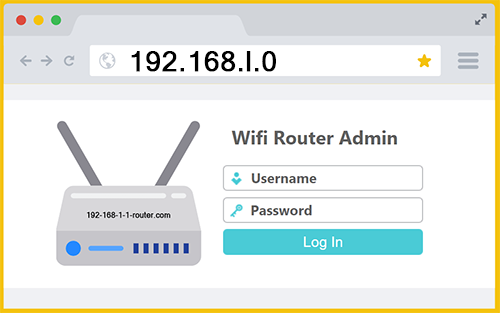192.168.l.0
 192.168.l.0 Login Admin
192.168.l.0 Login Admin
The network address 192.168.1.0 is commonly used as the default gateway to access a WiFi router’s management dashboard. This private IP address allows users to enter the router’s settings panel. Once logged in, you can adjust various settings, including updating your WiFi network’s name and password.
Managing 192.168.l.0 Admin Panel

Connecting to your home router using 192.168.l.0 won’t work because it’s not a valid IP address. If you type http://192.168.l.0 or https://192.168.l.0 in your browser, it will never display the router’s admin page since both URLs are false. To locate your router settings, click the button below or manually enter “192.168.1.0” into your web browser’s address bar.
Most popular username: admin
Most popular password: admin or password
The admin panel of your home network router is usually accessible from any device connected to the network. This includes smartphones (both iOS and Android), tablets (such as iPads), and computers (desktops and laptops). A common mistake users make when trying to manage their home network settings is entering an incorrect IP address like 192.168.l.0. If you type the wrong IP address, you won’t be able to access the router’s login page. Only the correct IP, formatted perfectly, will display the router admin login form.
192.168.1.0 vs. 192.168.l.0
To log in to your router as an admin, you should use the correct IP address, which is 192.168.1.0. A common typo is entering 192.168.l.0 instead. Can you discern the two? The incorrect one uses an “l” instead of a “1” in the third section, which is a small mistake that causes total failure. Even though they look almost identical, the second one is not an accurate IP address and will therefore not point to a network router. Never type “www” before the IP address, if you input www.192.168.l.0 your web browser will think you’re search the web for a phrase instead of trying to access your family’s Wi-Fi router.
Why is 192.168.l.0 an Important IP?
Logging into an Internet router as an admin allows users to perform several essential tasks to manage and secure their home network. For instance, users can change the Wi-Fi network name and password, enabling them to customize the SSID (network name) and set a strong password for added security. Additionally, they can set up security features by enabling security protocols like WPA3, configuring firewalls, and managing device access controls to protect the network from unauthorized access.
Many people across the world own a router that allows admin access via IP address 192.168.l.0 (as it’s one of the most common default IPs for logging into such a device). Admin access also allows users to update the router’s firmware, ensuring optimal performance and security by installing the latest updates. They can manage connected devices by viewing all devices on the network and controlling who can access the Internet. Furthermore, users can set up parental controls to restrict access to certain websites or set time limits for Internet usage, ensuring safe browsing for children.
Once successfully logged into a 192.168.l.0 router, other admin tasks include configuring network settings such as adjusting IP address allocation, DNS settings, and port forwarding to optimize network performance. Admin access is also crucial for troubleshooting connectivity issues, allowing users to diagnose and resolve problems by accessing detailed status reports and logs. Additionally, users can create guest networks to provide Internet access to guests without allowing them access to the main network’s devices and data. They can also adjust Quality of Service (QoS) settings to prioritize bandwidth for specific applications or devices, ensuring smooth performance for critical tasks like gaming or video conferencing.
Overall, logging in as an admin via IP address 192-168-l-0 provides full control over the router’s settings, enabling users to customize and secure their home network effectively. When attempting to locate the admin login panel, be attentive to the IP address you are typing. If you format it poorly, such as 192.168.l0 or 192168.l.0 it will lead you astray. Trivial mistakes when trying to log into a 192.168.1.0 router as administrator include 192168l0 and 192.168l0.
Default Credentials
Router brands such as Cisco, Ubiquiti Networks, Netgear, TP-Link, D-Link, and Tenda often use 192.168.1.0 as their default IP address (be careful not to confuse this IP with 192.168.l.0 which looks similar but is flawed). The default username is usually “admin” and the default password is usually “admin”, “password”, or “1234”. You can refer to the router’s instructional manual for the correct IP address and login credentials. If none of the common defaults work, you may need to reset the 192.168 l 0 login password using a paperclip.
What is 192.168.l.0?
A local IP, or local Internet Protocol address, is a unique identifier assigned to each device within a private network, such as your home or office network. Unlike public IP addresses, which are used to identify devices on the wider Internet, local IP addresses are used only within the confines of your local network.
Home WiFi routers normally have a default IP address that enables a user to access its admin panel. 192.168.l.0 is one such local IP address that is frequently used by some of the largest router brands on earth. This address is part of the private IP range reserved for local networks and is not accessible by the online public. Devices on your local network use local IP addresses to communicate with each other and with the router, which acts as a gateway to the Internet. If 192.168.l.0 does not display a login page, your Wi-Fi router might be configured with a different IP. In such a case, it might be worth trying to login via 192.168.l.l or another common IP address.